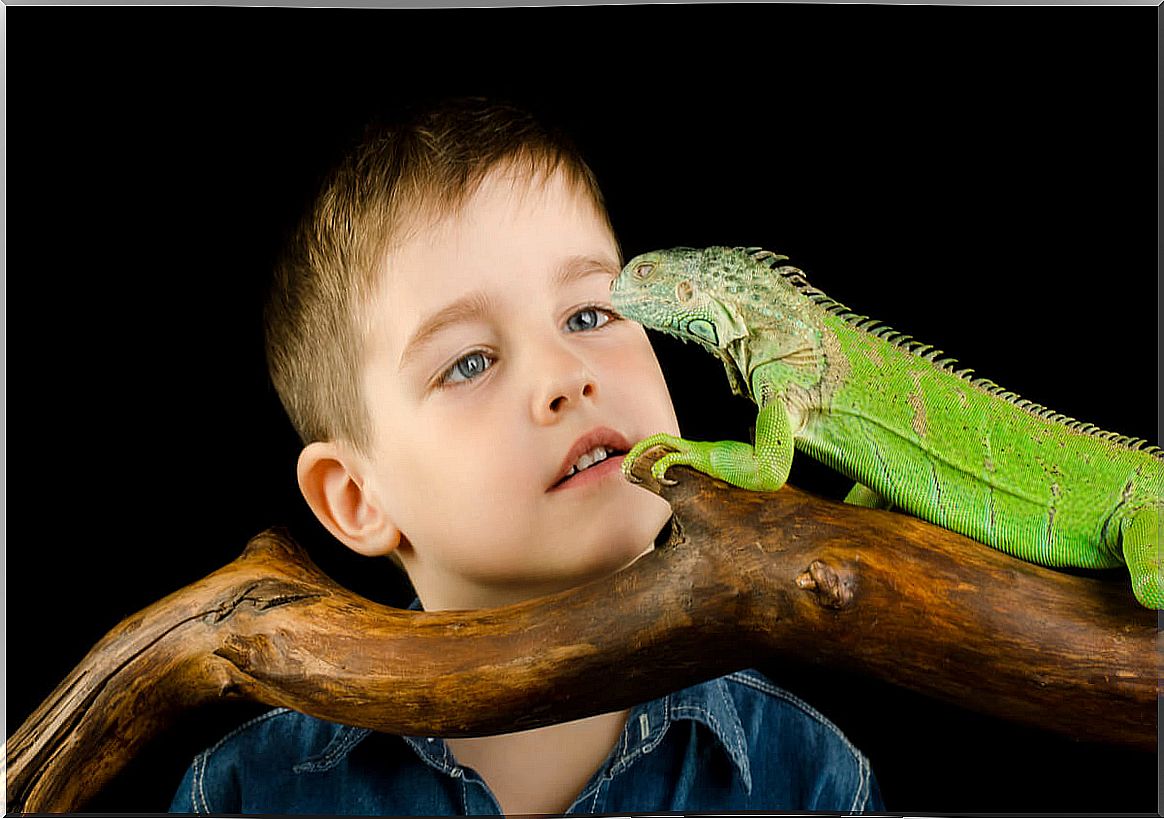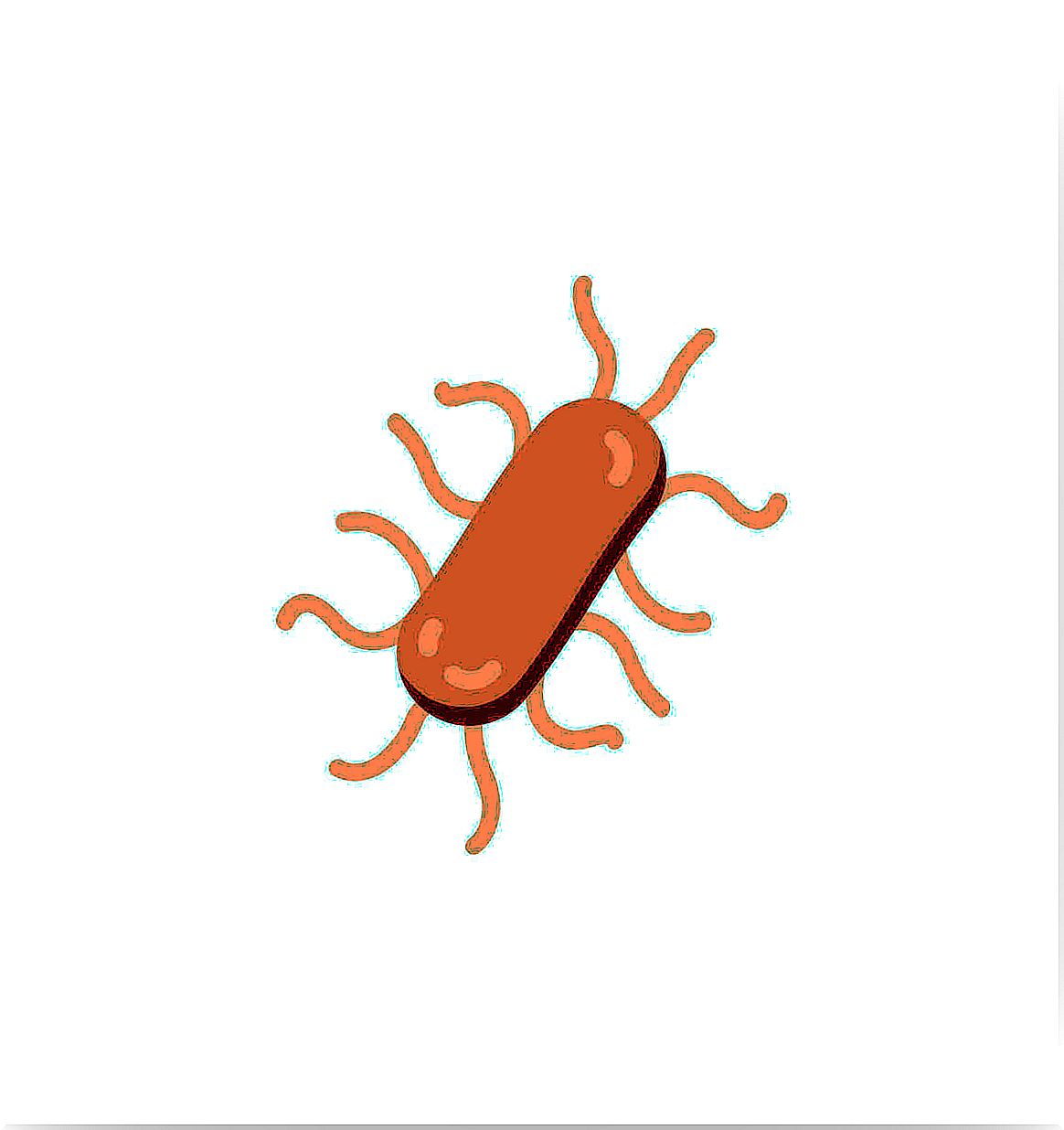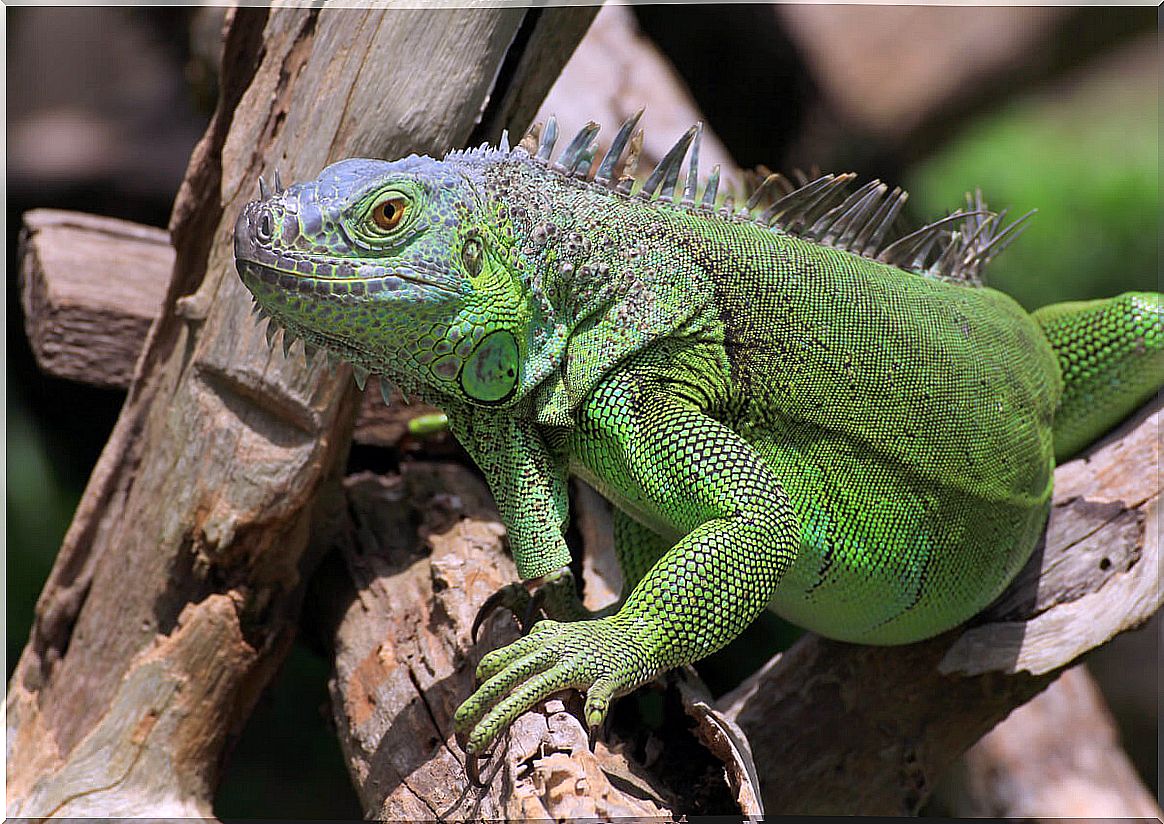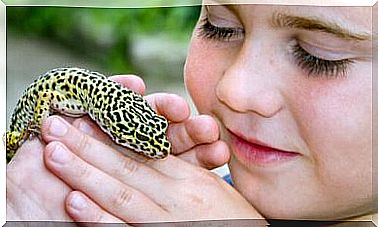Your Exotic Reptile Or Amphibian Can Cause Salmonellosis

Salmonellosis is a disease transmitted by enterobacteria of the genus Salmonella . Some species of this taxon live naturally on reptiles and amphibians. For this reason, it is necessary to exercise some caution when handling almost all exotic species, especially those that come from wild capture.
The same animal can carry several strains of Salmonella in its body. Luckily, salmonella is susceptible to many disinfectants and also to heat so, by being careful when handling reptiles and amphibians, any experienced guardian can avoid contagion.
Can reptiles and amphibians give you salmonellosis?
The Salmonella is found in the gut of infected reptiles although not cause symptoms in them- and is mainly spread by the fecal-oral, since potentially pathogenic bacteria are removed so continuously or intermittently through the feces of the infected animal.
A reptile or amphibian can get Salmonella through the feces of other reptiles or through contaminated food, water, or substrates. On the other hand, Salmonella reaches humans through the handling of the reptile or amphibian or through an object contaminated by feces, water or also infected food.
These bacteria can survive for long periods of time in the environment, especially if the climate is hot and humid, such as amphibian and reptile terrariums, even after removing the animal from its facility. Cleaning and feeding materials can also contain bacterial load for a time.

Salmonella in humans
After being infected with Salmonella , the first symptoms can appear between 6 and 73 hours after contact and can last from 24 hours to 12 days. The main sign of salmonellosis is gastroenteritis, which can present with varying degrees of severity. Asymptomatic infections can also occur.
With the typical gastroenteritis of salmonellosis, other associated symptoms appear. Among them, we find the following:
- Nausea and vomiting
- Abdominal pain.
- Diarrhea
- Headaches
- Fever and chills
- Myalgia, that is, characteristic muscle pain.
In many cases, symptoms resolve spontaneously within 1-7 days, but infection can be more severe in the very young, elderly, or immunosuppressed. Despite this, in very few cases it becomes fatal.
The treatment of salmonellosis consists of the administration of different antibiotics, since many strains are resistant to one or more of them. If you are the owner of a reptile or amphibian and you feel symptoms similar to those described, it is important that you go to the doctor and indicate the animal you have at home to seek the correct diagnosis and treatment.
How You Can Prevent Salmonellosis
There are no vaccines to prevent the disease, but you can follow a series of recommendations to prevent salmonellosis infections associated with reptiles and amphibians. Here is a list of the most important tips to stay safe without rejecting the enjoyment of your exotic pet:
- Wash hands thoroughly with soap and water — and often — after handling reptiles or their cages.
- Changing clothes after having contact with animals, especially before interacting with young children – who are more susceptible to complications – as well as the elderly or immunosuppressed people.
- Avoid eating, drinking or smoking while handling reptiles or their enclosures.
- Do not allow reptiles to roam the house freely.
- Keep animal terrariums away from kitchens and other food preparation areas.
- Do not use the kitchen sink to bathe reptiles or clean their dishes, terrariums or accessories. If it is used for this purpose, it is necessary to disinfect it completely after doing so.
- As obvious as it sounds, it is important not to kiss reptiles or amphibians or share food with them.
Can reptiles and amphibians get sick from salmonellosis?
As a precaution, it should always be assumed that reptiles and amphibians can carry salmonellosis and follow the above indications to prevent contagion. There are documented cases in turtles, lizards, iguanas, snakes, chameleons, frogs, salamanders, and many more herpete taxa.
Even so, the disease in these animals is very rare. The incubation period is highly variable and, in addition, symptoms only appear when the animal is very stressed or has another disease.
There are tests to detect Salmonella in these animals and you can consult an exotics vet if you need it. Antibiotic treatment for reptiles is discouraged, as it tends to worsen the clinical picture of the sick animal.

In many cases, the elimination of the bacteria is not feasible and its control is limited to preventing the appearance of clinical diseases and avoiding the transmission of the bacteria to humans. Good hygiene and minimizing stress for the animal are also important factors in ensuring its health.








